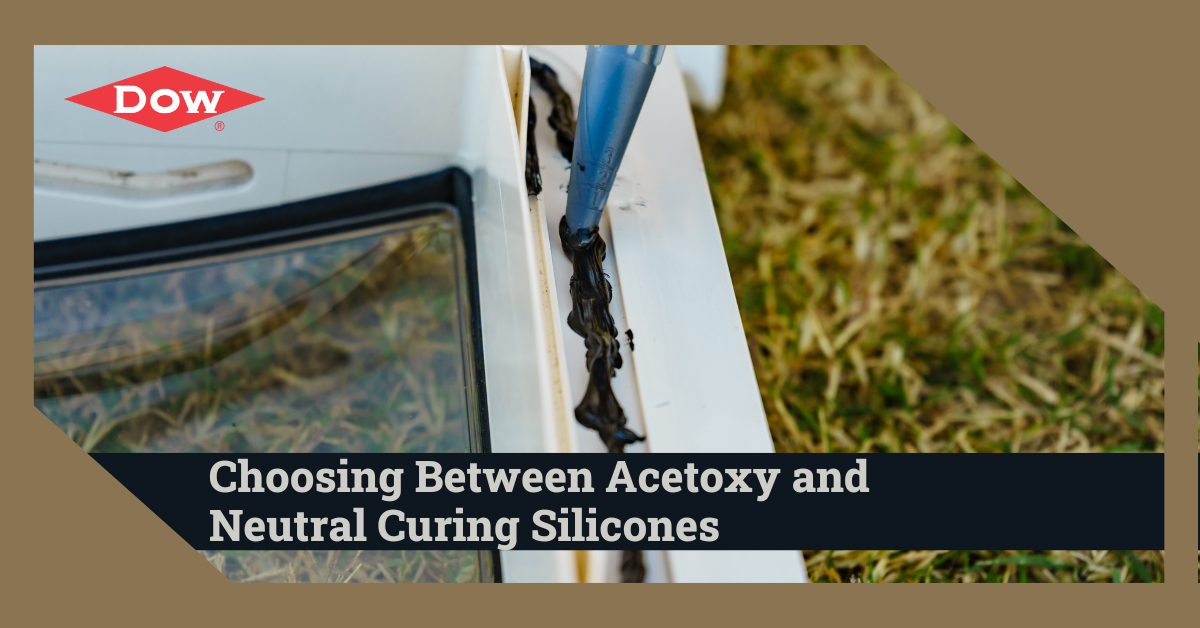Choosing Between Acetoxy and Neutral Curing Systems

Due to their versatility and resilience, silicone sealants are essential across multiple industries. Understanding the differences between acetoxy and neutral curing silicones is vital when choosing which sealant is best for your job.
Acetoxy Silicone Sealant
Acetoxy silicone sealants cure swiftly by releasing acetic acid and are the go-to for time-sensitive projects such as sealing windows, door frames, and kitchen backsplashes. However, their rapid cure comes with a distinctive vinegar-like odor during application, which may prove unpleasant. Furthermore, their acidic nature poses a potential risk to delicate electronics and certain substrates, so caution should be exercised when applying them.
Neutral Silicone Sealant
Neutral curing silicones, including oxime and alkoxy silicones, typically have a longer cure time compared to acetoxy cure sealants but are a non-corrosive alternative. They boast superior adhesion properties, making them an ideal choice for diverse substrates such as metal surfaces and electronic components. Additionally, their lack of strong odor during curing enhances the user experience.
When confronted with the decision between acetoxy and neutral silicone sealants, an educated approach is essential. While neutral silicones offer versatility and robust adhesion across a wide spectrum of substrates, acetoxy types excel in scenarios demanding rapid curing, like in sanitary rooms or glass-to-glass joints. Remember, the right silicone choice can be crucial in achieving both efficiency and effectiveness in your sealing projects.
Learn more about Dow silicones at dow.com.
To see the Dow Silicone products we offer, visit here. For more information or questions, contact us at lentus@lentusllc.com.
